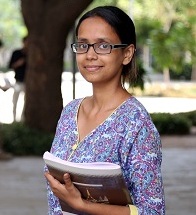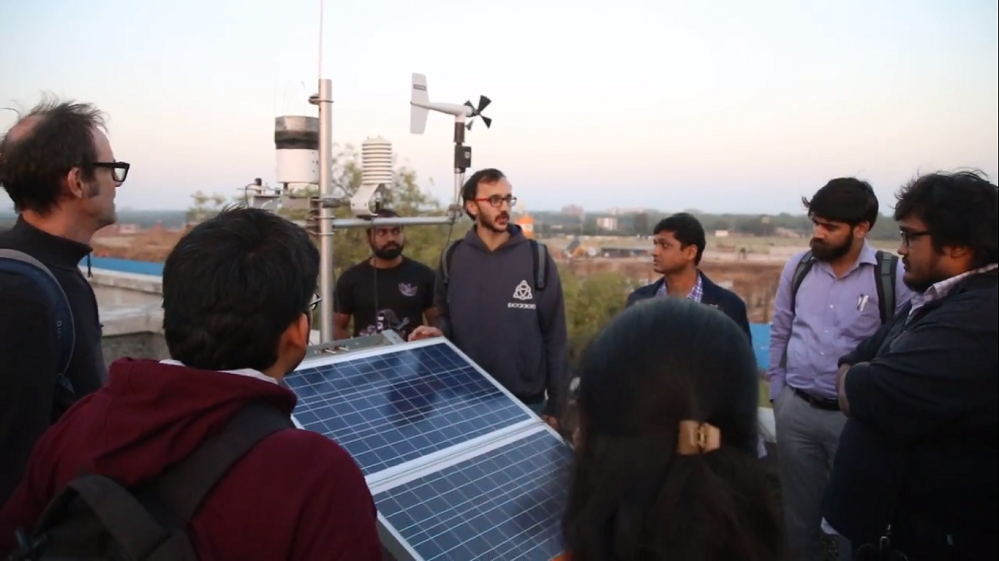Did you know that air pollutants, especially dust and particulate matter, are estimated to reduce the solar power generation by as high as 40% in the regions of their high concentrations?
Many cities of India are the top rankers in the World Health Organization’s list of the most polluted cities around the world. This air pollution is highly dangerous, not only causing ill-effects on our health but also standing in the way of India’s ambitious 100 GW solar energy production by the year 2022. Recent studies have shown that poor air quality negatively affects the solar (electrical) energy production, accounting for global losses worth tens of billions of US dollars annually.
The aim of this team, which comprises of environmental scientists, engineers, energy experts, and materials scientists, is to develop solar panel materials with engineered surfaces that minimize the deposition of PM and are easily cleanable, reducing the energy losses. The long term plan is to generate a comprehensive global model that, on the one hand, estimates the impacts of PM, and on the other, gives cost-effective, location-specific strategies to minimize their influence on solar power generation. This study is one of ten IIT Gandhinagar international research projects approved by the Ministry of Human Resources Development (HRD), Government of India, as part of the Scheme for Promotion of Academic and Research Collaboration (SPARC).

During his visit to IITGN recently, Dr. Mike Bergin*, one of the collaborators and Professor in the Department of Civil and Environmental Engineering at Duke University, expressed, “We see this haziness in the atmosphere, a large chunk of which is due to the PM. Apart from being a health hazard, they are making the solar panels dirty, and it is a global problem. The most interesting part is that not many people have looked at this aspect of air pollution in detail. So, if we decide to control air pollution, it will have more benefits than can be imagined. Other than healthier individuals, there will be way more renewable energy, and hence, less use of fossil fuels, leading to a lot less carbon dioxide emissions and a greener environment. That’s the idea.”
As the first step of this project, the team has developed low-cost sensors to measure the influence of PM deposition on solar power generation. Now, the researchers are teaching students how to utilize this equipment for data collection and analysis purposes, through short-courses and sessions focused on hands-on field-based research experiences. Several workshops are also in the pipeline.
In the words of Dr. Chinmay Ghoroi^, Professor in Chemical Engineering at IITGN, “Our earlier collaborative study in 2017 shows that India is experiencing a considerable percentage drop in electricity generation from solar plants because of these air pollutants. Industries are facing huge losses due to this, but they lack the proper information. This project will help spread awareness on this topic and how to combat it. We are in the process of engineering durable and economically feasible solar panel surfaces that deposit less dust, are easily cleanable and hence save more water during washing, as compared to the conventional ones in use today.”

Explaining the workflow of evaluating the solar panel soiling at the IITGN campus, Aniket Ratnaparkhi (Ph.D. scholar, Chemical Engineering, IITGN) said that this research would help formulate the appropriate strategy for solar panel cleaning cycles. In the long run, it would disseminate necessary knowledge among industries, policymakers, stakeholders, research institutes, and academicians, on this matter of grave importance.
“The nation that leads in renewable energy will be the nation that leads the world.” — James Cameron, renowned filmmaker, artist, and environmentalist
— — — — — — — — — — — — — — — — — — — — — — — — — —— — — — — — — — — — — — — — — — — — — — — — — — — —— — — — —
* Dr. Bergin is particularly interested in how the formation, emission, and deposition of PM influences the climate and has conducted studies in various regions of the world, viz., Greenland, Southeastern USA, China, and India.
^ With research interests in particle chemistry, surface engineering, and materials, Dr. Ghoroi is working on the complexities of surface wetting and super-hydrophobic/hydrophilic surfaces.
** This story has also been published on Medium.

APEKSHA SRIVASTAVA
Senior Project Associate

